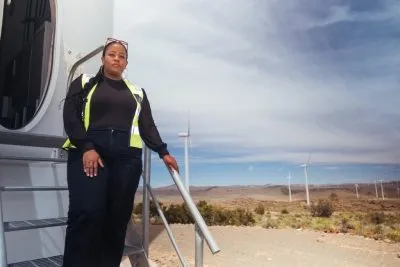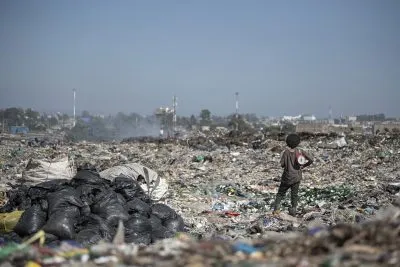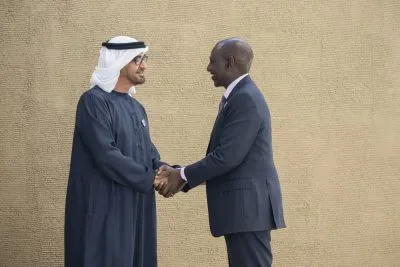Africa is on the cusp of a new epoch.
The continent has long been the source of mineral resources that have proven extremely useful for other economies. Unfortunately, that model, characterised by raw materials shipped out of the continent and the host countries completely shut out of the value chain meant that only a small fraction of the benefits accrued to them, even as they often had to shell out precious foreign exchange to buy the very goods produced from the raw materials under their feet or over their heads.
With a new energy paradigm in sight and Africa once again in possession of the critical minerals that will power it, leaders on the continent are determined that things will be done very differently.
Antonio Pedro, Acting Executive Secretary of the Economic Commission for Africa, is convinced that such a path is within reach. “We are in the era of sustainable transitions and Africa is in the centre of these solutions,” he says.
New energy paradigm
The ECA has embraced the possibilities that this new energy paradigm, specifically in transport, holds for Africa. In partnership with other multilateral development agencies, notably the financiers – that is the African Development Bank, African Export-Import Bank, BADEA and African Finance Corporation – he says they have stepped up their efforts to put the Democratic Republic of Congo and Zambia at the centre of the battery and electric vehicle production value chain.
The DRC’s proven reserves of cobalt and copper place it in very good stead to reap a sizable share of an industry predicted to be worth $7.7 trillion by 2025 and an astounding $46 trillion by 2050.
Pedro says these efforts are in keeping with the conviction that drives the ECA. Indeed, as far back as 2007 he states, the institution has been instrumental in efforts to reform and improve the African extractives sector.
“It was clear, even then, that securing the future of the African extractives industry required the emergence of African resource companies,” he says. “That year, we organised the Big Table on ‘Managing Africa’s natural resources for growth and poverty reduction’, which brought together ministers of finance in Africa, along with their counterparts in the Organization for Economic Cooperation and Development to engage on how Africa’s natural resources could be managed for growth and poverty reduction. The conclusion from that summit was that the existing mineral regimes were not really serving Africa well and there was a need to take another look at them.”
In response, ECA put together the International Study Group (ISG) on Africa’s Mineral Regimes, which produced a seminal report ‘Minerals for Africa’s development’, assessing the nature of the industry.
“It recognised the need to review how the industry was configured, operating as enclaves with no links to the local economies,” Pedro recalls. The report informed the formulation of the Africa Mining Vision, which would be subsequently adopted by the African Union in February 2009. “Africa has the potential to capture significantly more than what it does by just exporting raw materials. It is a travesty that it doesn’t,” he observes.
It is these enduring lessons that continue to animate the ECA’s mission in the DRC and a subject matter you can tell fascinates the Acting Executive Secretary of the ECA. Armed with the results of a study which showed that battery production in the country would involve lower costs and emissions than in other production centres around the world, the ECA is engaging with local and international partners to move the DRC up the value chain.
Practical steps
But the vision requires practical steps and the ECA is working on those as well. Among these are the creation of a battery council; a special purpose vehicle to ensure that ordinary citizens are not left out; and a centre of excellence in battery production to develop local capacity, research and development and manpower.
Gratifyingly, neighbouring countries have also pronounced themselves keen on this vision. At a summit in 2021, the president of Zambia – a country also rich in minerals – and Morocco’s trade minister – Morocco being one of the most important car manufacturers in Africa – both of whom were present, expressed interest. Since then, Zambia has gone ahead to sign a cooperation agreement with the DRC and will be covered in a feasibility report expected by the fourth quarter of 2023.
With 70% of global production of cobalt and a global market valuation of $1.3 trillion as of 2022, the industry in DRC could potentially be transformational not only for the region but the entire continent. The DRC’s ministry of finance estimates that it could increase its revenues by a factor of 25 if it is able to produce battery parts, as opposed to exporting the raw metals.
Local production of batteries will come with other benefits too. It will mean the continent would better able to harness power from solar, wind and other renewables, all of which require batteries to store and distribute the power, another opportunity that the transboundary economic zones would seek to capitalise on.
It will also mean that Africa can power the estimated 2m trucks needed to transport goods under the Africa Continental Free Trade Area with its own locally manufactured batteries.
Opportunity for investors
For investors, this should be too good an opportunity to pass up. And while the usual issues of governance and rule of law do need to be addressed, Pedro points out that it hasn’t stopped investment in the extractive industry in the past, and so should not stand in the way now that the purpose is to foster local production and value addition. In any case, the ECA is confident that special economic zones, such as the one to be built on 2000 hectares of land in Katanga, can insulate investors and encourage them to commit to the plan.
“This is something we have to take very seriously and that is why we have insisted on creating all these structures. And we will be actively involved in these institutions so that we can continue to provide support to the country” Pedro emphasises. The models for production are likely to be joint ventures between state and private sector players, with owners of the technology likely retaining majority shares.
The important thing, he stresses, is for value to be created on the continent. “It is possible,” he asserts, “for an Africa-wide value chain to be created, with the poles for the production of electric vehicles being Morocco, Algeria and Egypt in the north; Ethiopia and Kenya in the East; South Africa in the South; and Senegal in the West.”
Clear strategy is needed
Still in pursuit of this vision, the ECA is working with the AU, the African Development Bank and other stakeholders to develop an African Green Minerals Strategy to guide and direct how the continent utilises its minerals in this new era.
“We need to have a clear strategy, so we don’t miss this opportunity,” Pedro says. The AU is leading this process and will incorporate it into its own commodity strategy. Africa’s private sector must also play a role in building this industry. “Our own captains of industry also need to invest in the battery and electric vehicle value chain. We are engaging with them to let them know the magnitude of opportunities. They have already moved into cement, fertiliser and other areas. This is the next opportunity”
Despite the tantalising opportunities and the risks if not taken, Pedro is cautious about employing heavy-handed tactics such as banning exports of battery minerals. He points out that Indonesia tried to do so with nickel and had to reverse course after only a few months. Better, he argues, to let the numbers, the evidence, make the point for local production and allow a sunset period within which local capacity can be built.
There has already been some vertical integration between mining and technology firms, which bodes well for accruing the skills and technology that will be required. In the end, he says, it will be impossible to resist the (financial) logic: “A time will come when exporting raw materials will become very expensive because of the carbon targets and borders in the EU, for example. So when you factor that in, the question will be why don’t you produce here because your emissions profile will be much better than anyone else’s. So that is the kind of industrial policy we are looking at – one that is smart and evidence-based.”
Developing carbon markets
A similarly smart and knowledge-based approach should guide Africa’s efforts in the carbon trading markets. Which is why the ECA brought various players together for the Africa Business Forum under the theme “Making carbon markets work for Africa” on the sidelines of the AU Summit in February.
“We wanted to use the platform to raise awareness about the opportunities and share knowledge about how to develop carbon markets in Africa,” Pedro explains. It also offered the opportunity to highlight some success stories with a view to “whetting the appetite” of players. He says that the conference was a success by all these measures. The ECA now intends to work closely with countries that have expressed interest and support them through what is a rather complicated process.
A partnership between the African Carbon Market Initiative and the Rockefeller Foundation has yielded a platform for trading carbon locally, while the Congo Basin Climate Commission is also developing fundamental rules for the nascent industry. “Trust and credibility are critical to this, and we need to invest in that from the get go,” he says.
At Cop27 in Egypt, ECA presented some projects that combined climate action, nature conservation and livelihood improvement to demonstrate the potential. These co-benefits, he says, will make them extremely valuable.
“Some of the things the companies are doing can be converted into carbon credits that will generate income that can be invested in more social welfare programmes. We are very happy about that and we now have a number of activities to undertake for the next couple of years,” he says. He is also heartened by the Great Blue Wall initiative, also launched at Cop27 which he says includes projects that can be monetised for carbon credits because of the effects they have on the blue economy, conservation efforts and livelihoods.
More broadly, the ECA is intent on recalibrating its approach to meet the moment that we are in. Pedro, who took over as acting Executive Secretary in September 2022, says the organization will focus on sustainable financing and economic governance, industrialisation and economic diversification with particular focus on the opportunities of the AfCTFA and climate action, energy transition and associated issues.
Organisationally, it will strengthen its horizontal integration between the head office, divisions and its five sub-regional offices as well as the vertical integration with member states and UN country teams.
Reforming the global financial architecture
The ECA has been at the centre of the solutions being put forward to support African economies in the face of the recent massive global shocks. On the back of this, the ECA has set itself a grand objective to lead some of the conversations around the global financial architecture.
“We are certainly continuing with the work on the reform of the global financial architecture, engaging relevant parties on the Special Drawing Rights and how we can democratise that space and improve efficiency. Africa is not at the table, despite our size. There is an argument that the current system was designed to respond to the aftermath of the second World War and it has to be reformed to respond to the global shifts that have occurred since then,” he stresses.
Pedro will have an opportunity to canvass ECA’s vision when the African ministers of finance, planning and economic development meet at the 55th session of the ECA. He says he will engage with ministers about the need to push for these reforms, including the Secretary-General’s proposal for a $500bn stimulus to finance SDGs. But he will also put forward suggestions on how to accelerate sustainable industrialisation, economic diversification and inclusive growth that ‘leaves no one behind’, as the UN tagline goes. Africa’s natural resources can facilitate these transformations.
The ECA will continue to support such approaches, including with tech-led solutions that enable countries and investors to target their investments better. “Part of what we want to do is to help our countries with better growth diagnostic studies, trade decision support models, GIS enabled hotspot analysis of economic opportunities [GIS is a multi-layered mapping system], to name a few.
This, he says, is what is needed to complete all the other efforts the ECA is making – evidence-based decision making. The overarching purpose is to make Africa a globally attractive investment destination through a mix of internal improvements and global reforms. “We deserve more than we have now,” Pedro says. “If we put forward a narrative that is credible, we will have a seat at the table. Right now, we are not there and that is not fair”.
Want to continue reading? Subscribe today.
You've read all your free articles for this month! Subscribe now to enjoy full access to our content.
Digital Monthly
£8.00 / month
Receive full unlimited access to our articles, opinions, podcasts and more.
Digital Yearly
£70.00 / year
Our best value offer - save £26 and gain access to all of our digital content for an entire year!

 Sign in with Google
Sign in with Google 



